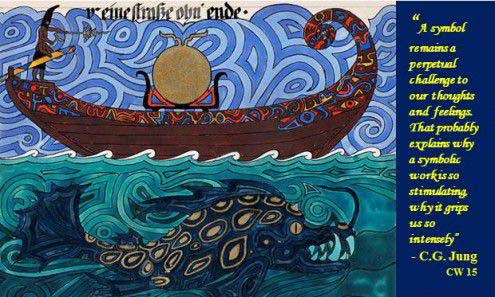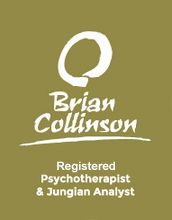Jungian Therapy & the Meaning of Dreams, 3: Symbols?

From the perspective of Jungian therapy, a good deal of the significance and meaning of dreams is carried by those very unusual creatures called symbols.

But what exactly is a symbol, the way that Jungian therapy uses the word? How do symbols create the meaning of dreams?
A Symbol is Not a Sign
You can’t just translate a true symbol into words. They aren’t like a stop sign, for instance ,or a skull and crossbones emblem which amount to alternate ways of saying “Stop” or “Poison”. A symbol has far more depth that that. It isn’t that what the symbol seeks to communicate is hidden, or in code. Rather, it’s something extremely hard to express in the ordinary everyday language of consciousness.
As Jung states:
“Their pregnant “language” cries out to us that they mean more than they say.”
-Jung, CW 15
Not Created by the Conscious Mind
The meaning of dreams isn’t shaped by the kinds of thinking found in the conscious mind. Also, the symbols that we find in dreams don’t communicate the same perspective on our personal reality that we find in our waking life. One good way of looking at each symbol in a dream is to see it as a if it were a picture painted by the unconscious, showing what the unconscious “thinks”, for lack of a better word, of the attitude and perspective that the conscious mind or “ego” has, at any given point of time.
Jung sums it up by saying that a dream symbol is “An unconscious invention in response to a conscious problematic”.
Beyond Language
The symbols in dreams are more like art or poetry than they are like the articles in your morning newspaper. They show us dimensions of ourselves that we can’t easily or simply put into a few words or paragraphs. To dream is often to contact an amazingly eloquent portrait of your life situation, created by the genius of the unconscious.

Symbols Encapsulate Our Psychological Situation — and Show the Way
Very often, symbols in dreams capture conflicts with which we are confronted in our psychological situation. As Andrew Samuels puts it, “The symbollic process begins with a person feeling ‘stuck’, hung up, forcibly obstructed in the pursuit of his aims and it ends in illumination, “seeing through”, and being able to go ahead on a changed course.” (Andrew Samuels CDJA, 145) To enter this symbollic process in its fullness is often a key part of the journey of /a-midlife-transition and Jungian therapy.
Next post in the series: Shadow.
[cta]
